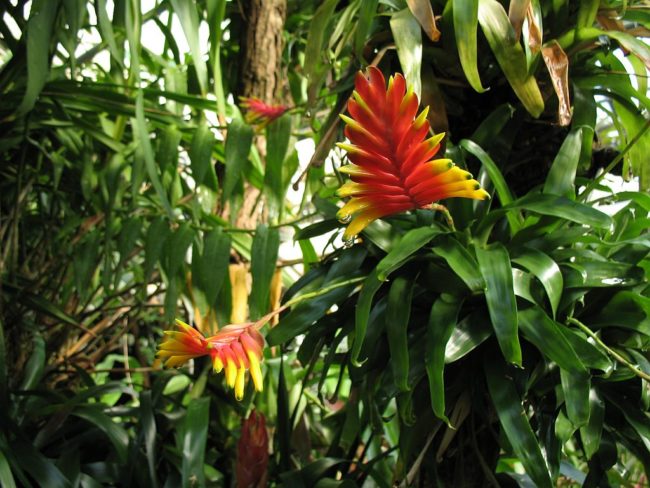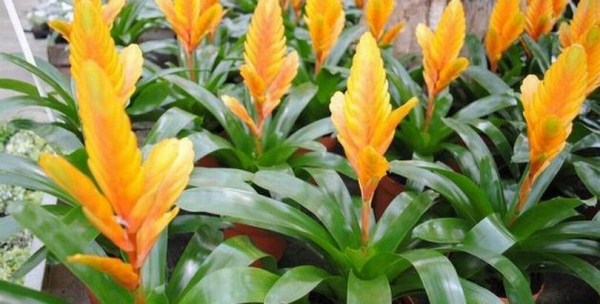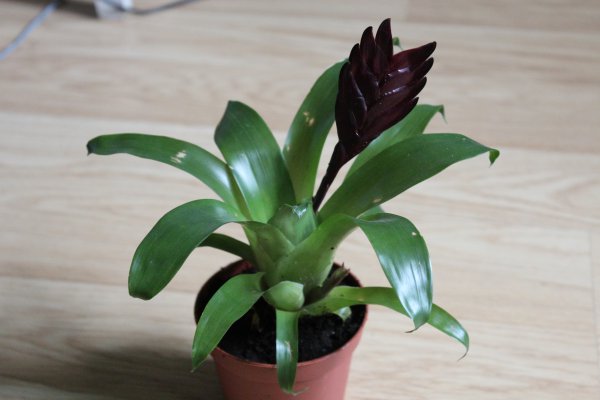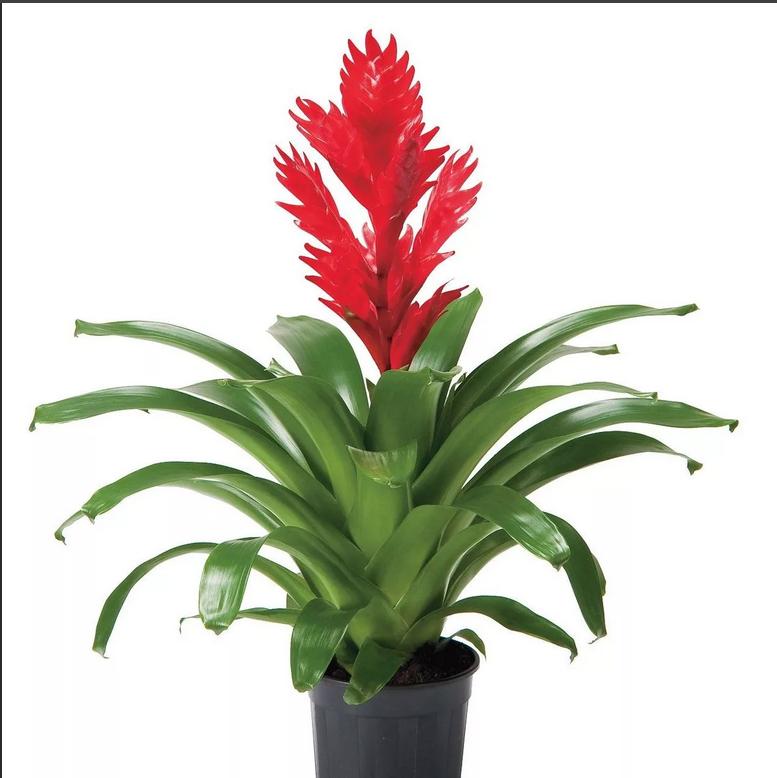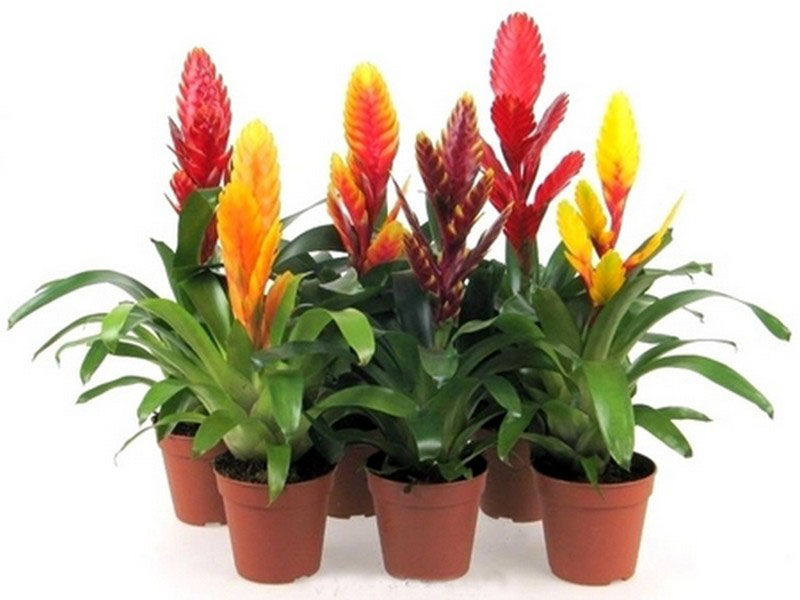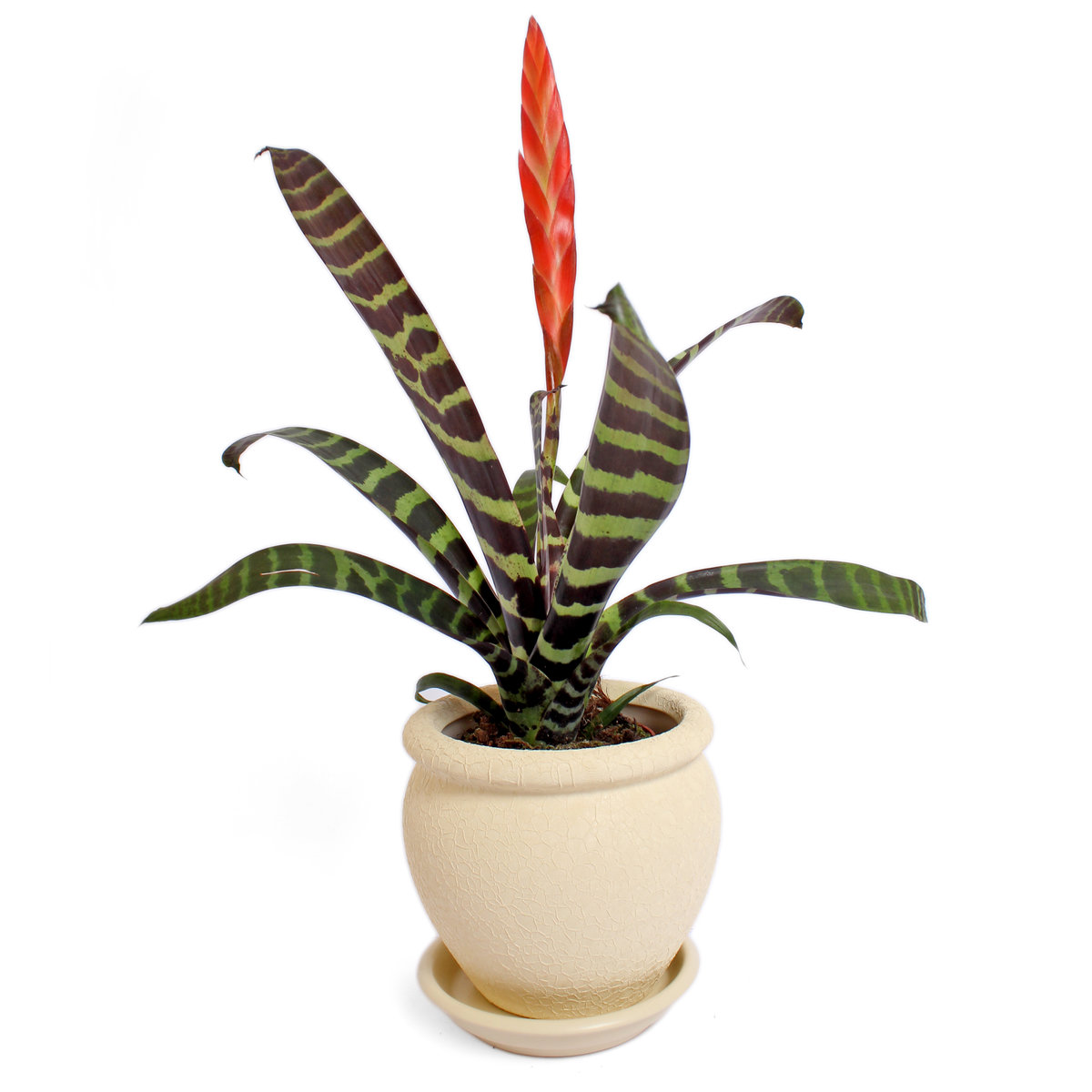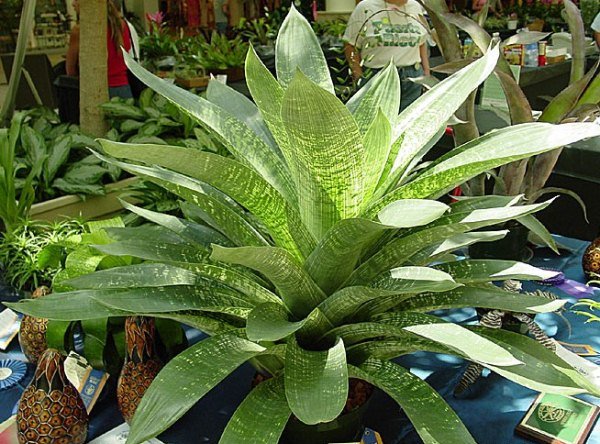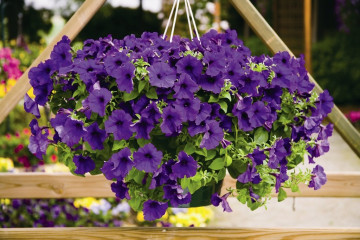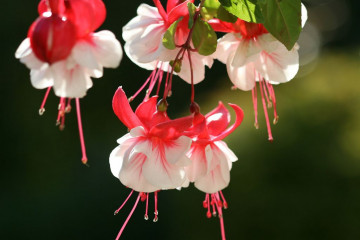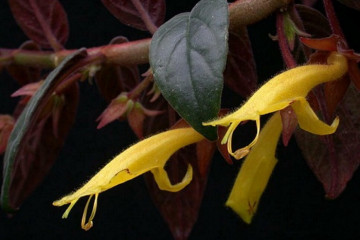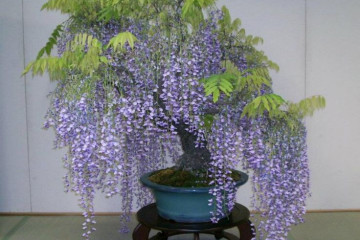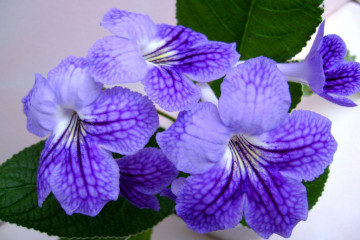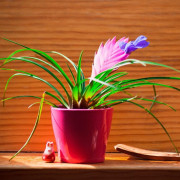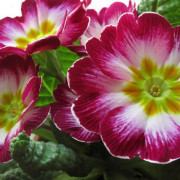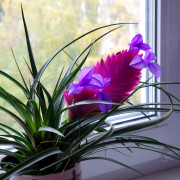Vriezia Splenriet - growing and care at home
Content:
Vriezia was isolated from the Tillandsia genus, which, in turn, has more than 250 varieties. Another name that flower growers also often use is frisia.
In the wild, the flower grows in the tropics and subtropics of America. Flowers live on the bark of trees, in gorges. Wild representatives feel great even on the highest rocks.
What does it look like
Leaf rosette in Splenriet vriezia looks like a funnel, consisting of long, hard leaves. Leaf plates can be green, striped. The peduncle grows from the very center of the funnel and is decorated with an inflorescence in the form of an ear. Bracts fit tightly to each other and are colored in a wide variety of shades. Depending on the varietal variety, the stem can be single or branched.
Vriezia: growing and caring at home
For a vriezia flower, home care consists of a large number of necessary measures. The decorative appearance of the plant and unusual flowering are possible subject to the rules of cultivation and care.
Temperature
Splenriet is very demanding about the temperature regime of Vriezia. The plant is thermophilic. It is best suited to a climate with a constant temperature of at least +18 degrees.
Lighting
In winter, the plant is best placed in the most luminous place. In the summer, the pot must be rearranged in partial shade so that burns do not appear.
Watering
The culture loves moisture, prefers settled warm water. In the cold season, the Vriezia flower is watered only once a week, in the summer - 2 times. The plant loves when watering is done not only into the ground, but also directly into the leaf funnels. Full sprinkling is best done during the summer season.
Spraying
It is important to keep the plant in a constantly moist environment. This is achieved by spraying. It is advisable to do it several times a day. It is necessary to irrigate the whole flower and the ground.
Humidity
The plant is native to the tropics. It is very important at home to maintain the required level of soil moisture for the flower. A good way is to place the plant on a special tray filled with drainage and water.
Priming
The substrate for the plant should be as light and loose as possible. For cooking, you need to mix:
- garden land - 2 parts;
- sod soil - 1 part;
- sifted sand - 1 part;
- pine bark - 1 part.
Adding sphagnum or charcoal to the mixture will allow the plant to get rid of excess moisture in a timely manner. If you do not want to prepare the soil yourself, you can purchase it in a specialized store.
Top dressing
Caring for Vrieseia involves applying liquid fertilizers throughout the spring and autumn. Top dressing is carried out 1 time in 14 days.In this species, nutrients are applied directly to the outlet, since the root system does not affect the correct development of the flower.
Vriezia Era outdoors
The plant reacts extremely negatively to any temperature fluctuations, it is critical of drafts. The Vriezia Era flower can be taken out into the street only between 11:00 and 17:00. The air temperature should be kept between 24 and 27 degrees.
Transfer
The transplant of an indoor vriezia flower should be carried out only in the most extreme cases. The plant reacts painfully to this process. Transplanting is possible only if the pot has become small. Even with the slightest damage to the roots, the flower will recover for a long time, or it may even die.
When it blooms
Vriezia blooms once every few years - in the summer. Small flowers wither instantly, and bright bracts last for several months. After the completion of the process, Vriese slowly dies. For this species, this phenomenon is the norm. After the death of the parent bush, new offspring are often formed, which, when transplanted, will grow into a full-fledged plant.
How does it multiply
There are two options for reproduction of the Splenriet vriezia flower: seeds and offspring.
Vriezia keeled from seeds
This is a difficult and extremely "thankless" way of reproduction. To collect seeds from a flower, you must wait until the peduncle is fully ripe. Sowing is carried out in a mixture of river sand and sphagnum. To improve germination, the seed is pretreated with potassium permanganate and dried.
Watering is best done with a spray bottle. The container with landings is covered with glass and constantly ventilated. The first shoots will appear only after a month. The young plant dives after the first true leaves appear. The substrate for it should consist of peat, leaf and sod land. After six months, the vriese is transplanted into a large container. The flowering of an ornamental plant grown from seeds will begin no earlier than in 5 years.
Vegetative propagation
Post-flowering Vrieseia is transplanted after it has completely bloomed. In place of the flower, young shoots are formed. When the "kids" are old enough, they must be separated from the "parent" and put in another pot.
The substrate is prepared from 3 parts of leafy soil, 1 part of sifted sand, 1 part of pine bark. At the time of rooting, a young flower of Vriezia Splenriet is covered with a film or bag. The rooting process takes about 30 days. Only then can the plant be transplanted to a permanent place of residence.
Possible problems
If the watering rules are not followed, the plant may become infected with fungal diseases. Most often it is gray rot or fusarium. For urgent treatment, it is necessary to adjust the watering regime - to reduce it. Then Friesia must be treated with a fungicide.
Insufficient humidity in the room will immediately affect the plant. The ends of the leaves will instantly begin to dry out. Treatment - increasing the level of humidity in the room.
Why Vriezia does not bloom
The main reason for the lack of flowers is cold air. Vriezia bloom can be achieved artificially:
- The pot is covered with any transparent vessel.
- Fresh fruits are laid out near the plant.
Pests
There are a number of pests that can damage Vriezia: spider mites, thrips, scale insects.These insects cause yellowing of the leaf plate and rotting of the roots. To protect the plant, it is urgent to treat it with soapy water, and then spray it with fungicides. The scabbard, which often lives on a flower, can only be removed by hand.
Common varieties
There are more than 250 species of Vriese in the wild. There are much fewer indoor subspecies and they are of two types: with monochromatic and with striped leaf plates.
With plain leaves
Many varieties of Vriesia are represented by monochromatic foliage of different shades. Inflorescences can also have different colors.
Royal
This is the largest representative of Vriesia Fenestralis. The leaves can reach 50 cm, and the peduncle is 2 meters. The inflorescences of this species resemble a panicle. In the early stages, the flowers are white, and when fully ripe, they are yellow. The royal variety has a very strong aroma.
Mix
This is the most interesting species, which has won a lot of fans due to the unusual appearance and variety of the color palette of inflorescences. Its foliage is bright green, bizarre flowers with highly branched inflorescences in the middle. The color can be yellow, orange, red or cherry.
With striped leaves
Striped leaves can have a longitudinal or transverse pattern. Flowers of these varieties are red, yellow, orange.
Sanders
Vriesea saundersii has a very large rosette. The size can be up to 50 cm wide, 40 cm high. Externally, the leaf plates have a very smooth structure resembling skin. The color of the leaves is green with a slight gray tint. The inside is painted in smoky magenta.
Shiny (Beautiful)
This variety is often referred to as Splendens Vriese. A distinctive feature of the flower is an extremely weak root system, which is located almost on the surface of the soil. The species has a wide rosette, foliage has curved ends. The stripes on the leaf plates are located across and are painted in bright contrasting colors.
Giant
The variety has other names: Chess, Mosaichnaya. Dark leaves are covered with lighter spots on top. The lower part is painted in red with a lilac tint. Vriezia Giant got its name for the highest peduncle. Under favorable conditions, the height of the flower can reach more than 2 meters. Yellow flowers are located on a weakly branched inflorescence.
The use of this flower at home is not justified due to the impossibility of achieving flowering.
For a Vriezia plant, cultivation and care implies timely measures, thanks to which the flower will bloom and decorate any home with its decorative look. Following all the rules described above will lead to an excellent result.
